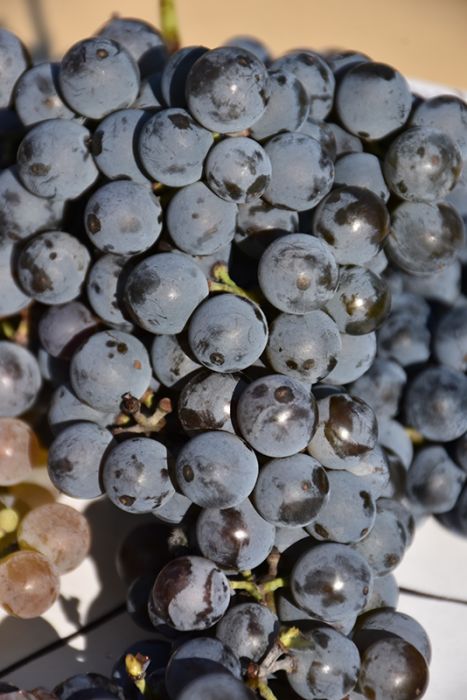Vitis, White Grape 'Frontenac Gris'


- Sun Preference
- Full-Sun
- Bloom or Harvest Time
- April, May
Description
A white form of ‘Frontenac’. Released by the University of Minnesota. A coppery-peach colored grape with the aroma of peach and apricot. Muscatlike grape is desired for wine making, fresh eating, and desserts. Excellent disease resistance.
Minnesota's Largest Selection of Shrubs
Elevate your landscaping with Gertens' unmatched variety of shrubs! Selecting the right shrubs for your backyard can enhance its beauty and functionality. Consider factors like sunlight, soil type, and mature size when choosing shrubs. For sunny areas, flowering shrubs like roses or hydrangeas can add color and charm. In shady spots, opt for shrubs like azaleas or hostas. Evergreen shrubs provide year-round interest and privacy, while deciduous shrubs offer seasonal color changes. At Gertens, we offer a wide selection of shrubs to suit every backyard need.
Details
Frontenac Gris™ Grape | Vitis 'Frontenac Gris'
Height: 20 feet
Spread: 24 inches
Sunlight: full sun
Hardiness Zone: 4a
Brand: Gertens
Description:
A hardy and disease-resistant white grape (actually a peach-blush color) that's excellent for wine, fresh eating and desserts; a vigorous muscat-type of grape vine, use as a screen for arbors or trailing along fences, requires regular pruning and full sun
Edible Qualities
Frontenac Gris™ Grape is a woody vine that is commonly grown for its edible qualities. It produces clusters of peach round fruit with coppery-bronze overtones which are usually ready for picking in mid fall. The fruits have a sweet taste and a juicy texture.
The fruit are most often used in the following ways:
- Fresh Eating
- Juice-Making
- Wine-Making
- Features & Attributes
Frontenac Gris™ Grape has rich green deciduous foliage on a plant with a spreading habit of growth. The lobed leaves turn yellow in fall. It produces abundant clusters of peach grapes with coppery-bronze overtones in mid fall.
This is a dense multi-stemmed deciduous woody vine with a spreading, ground-hugging habit of growth. Its relatively coarse texture can be used to stand it apart from other landscape plants with finer foliage. This is a high maintenance plant that will require regular care and upkeep, and requires a special pruning regimen to reliably produce fruit; consult a specific reference guide or contact the store for proper pruning techniques. It is a good choice for attracting birds to your yard. Gardeners should be aware of the following characteristic(s) that may warrant special consideration;
- Spreading
Aside from its primary use as an edible, Frontenac Gris™ Grape is sutiable for the following landscape applications;
- Hedges/Screening
- General Garden Use
- Orchard/Edible Landscaping
Planting & Growing
Frontenac Gris™ Grape will grow to be about 20 feet tall at maturity, with a spread of 24 inches. As a climbing vine, it should be planted next to a fence, trellis or other rigid structure where it can be trained to grow upwards on it. It grows at a fast rate, and under ideal conditions can be expected to live for approximately 20 years. This is a self-pollinating variety, so it doesn't require a second plant nearby to set fruit.
This woody vine is typically grown in a designated area of the yard because of its mature size and spread. It should only be grown in full sunlight. It prefers to grow in average to moist conditions, and shouldn't be allowed to dry out. It is not particular as to soil type or pH. It is somewhat tolerant of urban pollution. Consider applying a thick mulch around the root zone in winter to protect it in exposed locations or colder microclimates. This particular variety is an interspecific hybrid.
More Information
| Available for Pre-Order | No |
|---|---|
| Bloom or Harvest Time | April, May |
| Sun Preference | Full-Sun |
| USDA Hardiness Zone | 4, 5, 6, 7, 8 |
| Common Family Name | Grape |


